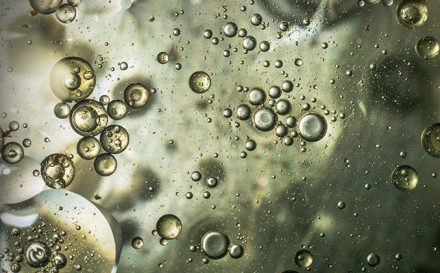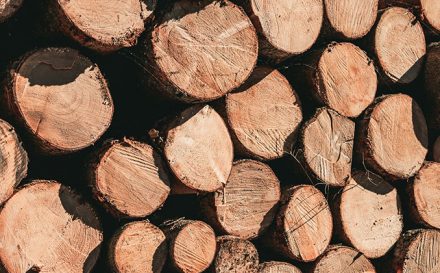Smart Key: What’s behind the seeming “naturalness” of cellulosic materials? The - Première Vision Paris - Denim Première Vision - Première Vision New York
Let’s unpack the secrets of sustainable fabrics through our Smart Keys. At the heart of eco-design issues, our Smart Keys series question all the available solutions to help you become more informed in your materials sourcing. Today, let’s discover cellulosic materials. A quick glance at the collections in the stores makes clear the massive popularity of viscose, lyocell, cupro and modal. Viscose, ideal in terms of printing, fluidity and comfort, is particularly prevalent in today’s wardrobes, and is currently the 3rd most used fabric in world, following polyester and cotton.
So what about these cellulosic materials, situated midway between natural and chemical? And how do we characterize today’s spectrum of sustainable artificial materials?
Cellulosic materials: 2 key elements

Ressources
These fabrics often ride the wave of the natural, renewable quality of wood, from which most celluloses are currently derived.
But it’s precisely those natural characteristics that demand we take a deeper look. Over the past 30 years, the production volume of cellulosic materials has tripled, leading to the destruction of primary forests and damage to biodiversity.
Old-growth forests are said to be able to absorb 40 times more carbon than industrially planted forests, and are home to many native ecosystems and habitats. According to the non-profit Canopy, half of today’s artificial materials are still derived from these forests, in spite of the significant progress made in this area. Faced with this alarming fact, new initiatives are constantly emerging to find ways to mitigate the problem.
Read also: Smart Key: Alternative plant-based materials

Transformation processes
Wood undergoes a series of processes to extract the pulp, dissolve the pulp and then transform that pulp into a filament. These processes involve a range of chemical treatments in order to procure these changes. The viscose process, which is still the leading one, involves the use of sodium sulfide, caustic soda, carbon disulfide, sulfuric acid … all of which are toxic and corrosive. Workers are particularly exposed to the repeated handling and exposure to these chemicals.
When effluents and gaseous emissions are not properly filtered and treated, harmful effects also develop beyond the confines of the factory. Regulations differ from country to country and from production unit to production unit, but the danger to surrounding populations and ecosystems is well known. Managing these transformation processes remains a critical and key issue.
How can we tackle these issues? The answer in 3 smart keys.
Smart Key #1: Turn to sustainable resources
The first step is to ensure that forests are well managed. Canopy works to protect old-growth forests. As an NGO, Canopy works with producers to establish sustainable forest management and encourage the industry to seek alternative resources to reduce the amount of wood that is used. Each year, the Hot Button Report and Ranking identifies audited suppliers committed to responsible sourcing.
Enka® viscose, Lenzing’s EcoVero™, and Eastman’s Naïa™ acetate are all leading lights in terms of these initiatives.
Two certifications

There are two certifications that can be used to verify sustainable forest management practices.
FSC, developed in 1993, was the first certification designed to protect and preserve old-growth forests. Through global requirements, it guarantees the conservation, restoration and continuous improvement of forests. This certification can indicate whether the resources are virgin or recycled.
PEFC certifies mainly European and South American wood. Requirement specifications include country-specific characteristics. The traceability system evaluates operations on the forest land and during the transformation of the wood.
Smart Key #2: Opting for recycled products, and alternative resources
The goal is to diversify resources and become part of a circular economy, by upgrading already existing textile waste or agricultural residue as a way to replace or complement wood cellulose. And wood-alternatives are particularly interesting because they are more efficient.
For example, using cotton waste is more efficient than using wood because of the purity of the cellulose found in cotton. One ton of reprocessed cotton yields the identical amount of cellulose, while wood processing leads to significant losses, requiring 2.5 to 3 tons of wood to generate one ton of cellulose.
The chemical recycling process used makes it possible to obtain fibers of the same quality as virgin fibers. By 2030, these new-generation cellulosics could represent 50% of the total supply.
NuCyc™ by Evernu, Infinna™ Infinited Fibers, Circulose® by Re:newcell, Worn Again Technologies, OnceMore® ny Södra, Seacell™ by SmartFiber, Refibra® by Lenzing and Bemberg™ by Asahi Kasei are the main initiators of change in this field.
Smart Key #3: Adopt closed-loop processes and sustainable chemistry
Lyocell was one of the first processes that made it possible to create cellulosic materials with a reduced impact. Based on a closed-loop system where non-toxic water and solvents are 99% reused, lyocell is favored by buyers and designers as much for its eco-friendly qualities as for its drape and strength.
New generations of recycled cellulosics also rely on the use of cleaner chemical processes. Advanced technologies are exploring new avenues. Nanollose, for example, transforms food biomass waste into microbial cellulose, obtained via natural fermentation.
While these technologies are the most sustainable, other initiatives exist to help ensure that transformation processes are carefully managed.
The ZDHC foundation (Zero Discharge of Hazardous Chemicals), aims to eliminate hazardous chemicals from production chains. A special set of specifications for cellulosic materials was compiled to help guide developments. This roadmap outlines responsible practices for wood sourcing, fiber production, wastewater management, and gaseous emissions.
